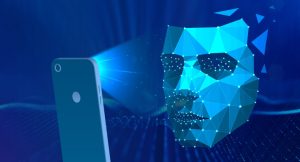Without the inspiration and innovation of two disabled individuals, the digital world likely wouldn’t be what it is today. Yet that same world so summarily excludes disabled individuals today that we’re eliminating the very people we will need to solve the web’s future problems.
Since the Americans with Disabilities Act was passed in 1990, our nation has worked to accommodate the needs of the disabled. Because of this, almost one in five disabled adults are now employed. But equal access has been ignored in the digital world. Almost 98 percent of the homepages of the top million websites are to some degree inaccessible today.
The simplest way to understand accessibility is to unplug your mouse and monitor. Try to navigate a website using only a keyboard. Building a site that works with this method is not difficult or expensive. It requires mere adherence to the standards that were established more than 20 years ago by the World Wide Web Consortium, which is chaired by World Wide Web inventor Tim Berners-Lee. Unfortunately, the average web designer or developer either doesn’t know about these standards, or ignores them.
US companies are being pressured to comply with these standards under ADA requirements. In the most high-profile case to date, Domino’s petitioned the Supreme Court to hear its case and to rule that such accommodation to the disabled population should not be required. Last month, the court ruled that it would not hear the case, reaffirming the lower court’s decision that the billion-dollar pizza chain must make its website and mobile app accessible for disabled users.
As we grow more accustomed to paying bills, working, learning, communicating, filing taxes, and registering to vote online, it will be harder to live without access to the web. Applying accessibility standards now will benefit millions of Americans and nearly 1 billion disabled people around the world. It will also be easier, and cheaper, than doing it later.
The digital innovations we enjoy today were brought about in large part by a few unique individuals blessed with brilliant minds and tenacity. As it happens, some were disabled, and it was their disability that inspired their innovation.
In 1971, Vint Cerf was a PhD candidate at UCLA when he learned about a digital communication project. Because he is deaf, Cerf was intrigued by the idea of communicating through computers, and he decided to make it his life’s work. The project, known as Arpanet, was the earliest glimmer of today’s internet. Cerf’s work provided the infrastructure for the web Berners-Lee would create in 1989.
Around the same time, Josef Engressia, who was born blind, helped revolutionize personal computing. Engressia, who later changed his name to Joybubbles, had acute hearing, and was drawn to the telephone. By age seven, he had learned how to manipulate the phone system’s computers. A series of specific tones, he discovered, signaled the system to connect callers at specific locations around the world. Joybubbles also had absolute pitch, and could whistle these tones into the phone to fool the computer into thinking the money had been paid for the call. He first made headlines after being arrested at a pay phone where he was charging people $1 to place long distance calls. Word spread and soon there developed a community of “phreakers,” the earliest hackers.
When Steve Jobs learned about Joybubbles’ work, he was inspired to create his first digital offering to the world. He asked his friend Steve Wozniak to build a device that could make the tones needed to fool the phone system. Others had created similar devices, but these so-called “blue boxes” were mechanical and often unreliable. Jobs knew digital technology would make a device more effective, reliable, and powerful.
In a 1994 interview with the Silicon Valley Historical Association, Jobs said: “To think two teenagers could build something for $100 that was able to control hundreds of billions of dollars of infrastructure around the world … that was magical. It taught us the power of ideas. If we hadn’t made blue boxes there would have been no Apple.” Without Joybubbles, one could argue, we very well might not live in the digital world of today.
Beyond fair and equal treatment, what is also at stake with web accessibility is the future of our advancing global civilization. Flashes of genius drives us forward, but we are blocking out some very bright minds by not providing access to this technology. We can’t know where the next innovation will come from, but we do know it most often appears from the confluence of many factors, and it always involves a struggle. Progress often comes at a cost.
For Hugh Herr, that cost was amputation. In 1982, a mountain climbing accident left him with frostbite so severe both of his legs had to be amputated. When he recovered from his injuries, he explained in a 2014 TED Talk, he realized “My body wasn’t broken. The technology was broken.”
Herr started to build his own prosthetics. He customized them for climbing and soon returned to the sport. He now heads the Biomechatronics group at the MIT Media Lab, where he has revolutionized prosthetic technology. Herr’s inventions not only support those in need of prosthetic limbs, they also improve the lives of the able-bodied: His advanced exoskeletons are being used to mitigate the natural degradation of joints as we age. He is on a mission to help eliminate all physical disabilities by the end of this century. Again, we don’t know when genius will strike, or from whom, but we do know that by excluding some from the online world we are doing a disservice to all.
Thirty years ago, Berners-Lee laid the foundation for a better world, a digital world, with limitless opportunity. It has benefited the majority. Now it’s time we let in the warriors among us, who live without comfort, who are brave enough to fight for change. They are the ones who will advance us further. They helped get us this far.
WIRED Opinion publishes articles by outside contributors representing a wide range of viewpoints. Read more opinions here. Submit an op-ed at opinion@wired.com.
More Great WIRED Stories
- Star Wars: Beyond the Rise of Skywalker
- How the dumb design of a WWII Plane led to the Macintosh
- Hackers can use lasers to “speak” to your Amazon Echo
- Electric cars—and irrationality—just might save the stick shift
- China’s sprawling movie sets put Hollywood to shame
- 👁 A safer way to protect your data; plus, check out the latest news on AI
- ✨ Optimize your home life with our Gear team’s best picks, from robot vacuums to affordable mattresses to smart speakers.



